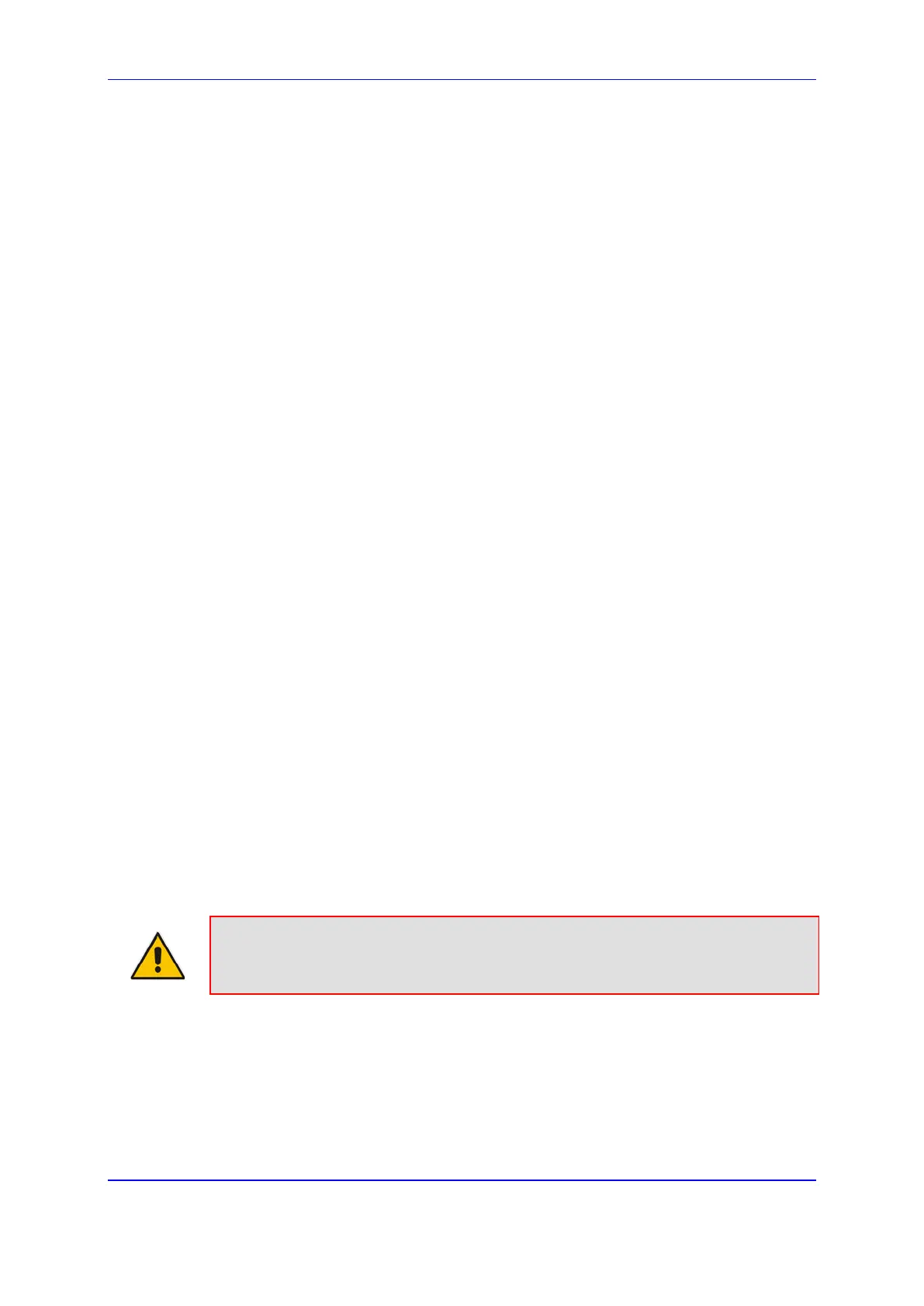Version 7.2 495 Mediant 1000B Gateway & E-SBC
User's Manual 22. Digital PSTN
Setup message to the Tel side and sends a 200 OK response (no 1xx response is
sent) to IP. The 200 OK response includes an encapsulated QSIG Call Proceeding
message (without waiting for a Call Proceeding message from the Tel side). If
tunneling is disabled and the incoming INVITE includes a QSIG body, a 415 response
is sent.
Mid-call communication: After the SIP connection is established, all QSIG
messages are encapsulated in SIP INFO messages.
Call tear-down: The SIP connection is terminated once the QSIG call is complete.
The Release Complete message is encapsulated in the SIP BYE message that
terminates the session.
To enable QSIG tunneling:
1. Open the Digital Gateway Settings page (Setup menu > Signaling & Media tab >
Gateway folder > Digital Gateway > Digital Gateway Settings), and then from the
'Enable QSIG Tunneling' drop-down list (EnableQSIGTunneling), select Enable on the
originating and terminating devices.
2. Configure the QSIGTunnelingMode parameter for defining the format of encapsulated
QSIG message data in the SIP message MIME body (0 for ASCII presentation; 1 for
binary encoding).
3. Configure the ISDNDuplicateQ931BuffMode parameter to 128 to duplicate all
messages.
4. Configure the ISDNInCallsBehavior parameter to 4096.
5. Configure the ISDNRxOverlap parameter to 0 for tunneling of QSIG overlap-dialed
digits (see below for description).
The configuration of the ISDNInCallsBehavior and ISDNRxOverlap parameters allows
tunneling of QSIG overlap-dialed digits (Tel to IP). In this configuration, the device delays
the sending of the QSIG Setup Ack message upon receipt of the QSIG Setup message.
Instead, the device sends the Setup Ack message to QSIG only when it receives the SIP
INFO message with Setup Ack encapsulated in its MIME body. The PBX sends QSIG
Information messages (to complete the Called Party Number) only after it receives the
Setup Ack. The device relays these Information messages encapsulated in SIP INFO
messages to the remote party.
22.6 ISDN Non-Facility Associated Signaling (NFAS)
In regular T1 ISDN trunks, a single 64 kbps channel carries signaling for the other 23 B-
channels of that particular T1 trunk. This channel is called the D-channel and usually
resides on timeslot # 24. ISDN Non-Facility Associated Signaling (NFAS) enables the use
of a single D-channel to control multiple PRI interfaces.
Note: NFAS is applicable only to T1 trunks.
With NFAS it is possible to define a group of T1 trunks, called an NFAS group, in which a
single D-channel carries ISDN signaling messages for the entire group. The NFAS group’s
B-channels are used to carry traffic such as voice or data. The NFAS mechanism also
enables definition of a backup D-channel on a different T1 trunk, to be used if the primary
D-channel fails.
The device supports up to 12 NFAS groups. Each group can comprise up to 10 T1 trunks
and each group must contain different T1 trunks. Each T1 trunk is called an "NFAS

